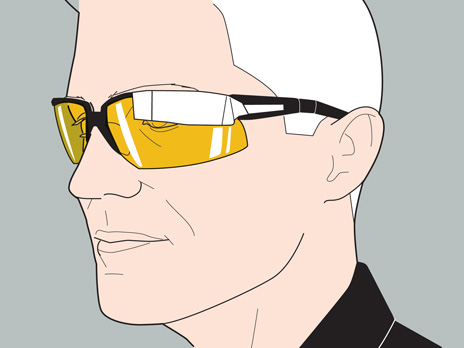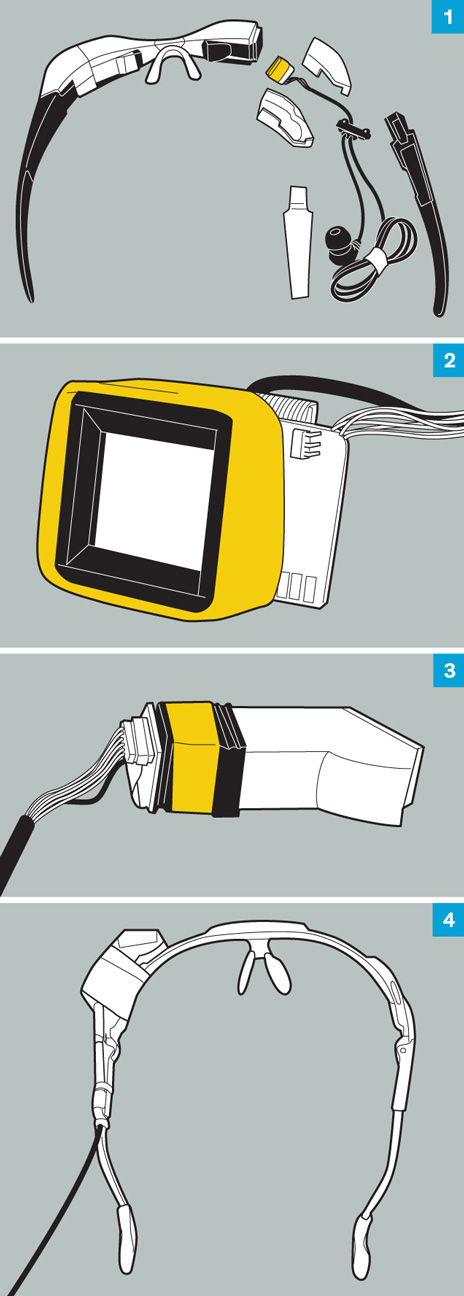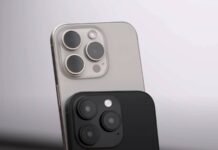Prezentarea Google Glasses a trezit interesul multora pentru ochelarii prin care poti vedea lumea inconjuratoare si informatii digitale in legatura cu ea, iar in anii urmatori vom vedea tot mai multe produse de acest gen. Pentru ca sistemul din spatele acestui tip de ochelari are la baza componente disponibile in terminale mobile, cineva a reprodus creatia companiei Google folosind un simplu iPod Touch. Cu ajutorul unui jailbreak, a unui mic ecran LCD, a unei camere Bluetooth si a indemanarii, ochelarii puteau inregistra video/face poze si afisau informatii direct din iOS.
I settled on a fourth-generation iPod Touch. I had to “jailbreak” it, which eliminates limitations built into the iOS software by Apple. Once that was done, I could mirror the Touch’s main display to the microdisplay using its composite video output. This choice of onboard computer meant that for a point-of-view camera (used to record images and video), I needed one that could communicate via the iPod Touch’s Wi-Fi or Bluetooth wireless interfaces. I used a Looxcie Bluetooth camera, which is small enough to be mounted on the side of the frame once you strip it from its plastic shell; you can order it online for around $150. (I’m already building a second iteration of my prototype around a Raspberry Pi. This will allow more control over the camera than is currently possible with the iOS apps that work with the Looxcie and better integration of sensors such as accelerometers.)
Mai multe despre proiect puteti citi aici, unde creatorul sau sustine ca modul in care percepe lumea inconjuratoare s-a schimbat de indata ce a inceput sa utilizeze ochelarii.
My world changed the day I first wore my prototype. At first there was disappointment—my software was rudimentary, and the video cable running down to the onboard computer was a compromise I wasn’t particularly pleased with. Then there was discomfort, as I felt overwhelmed while trying to hold a conversation as information from the Internet (notifications, server statuses, stock prices, and messages) was streamed to me through the microdisplay. But when the batteries drained a few hours later and I took the prototype off, I had a feeling of loss. It was as if one of my senses had been taken away from me, which was something I certainly didn’t anticipate.


















